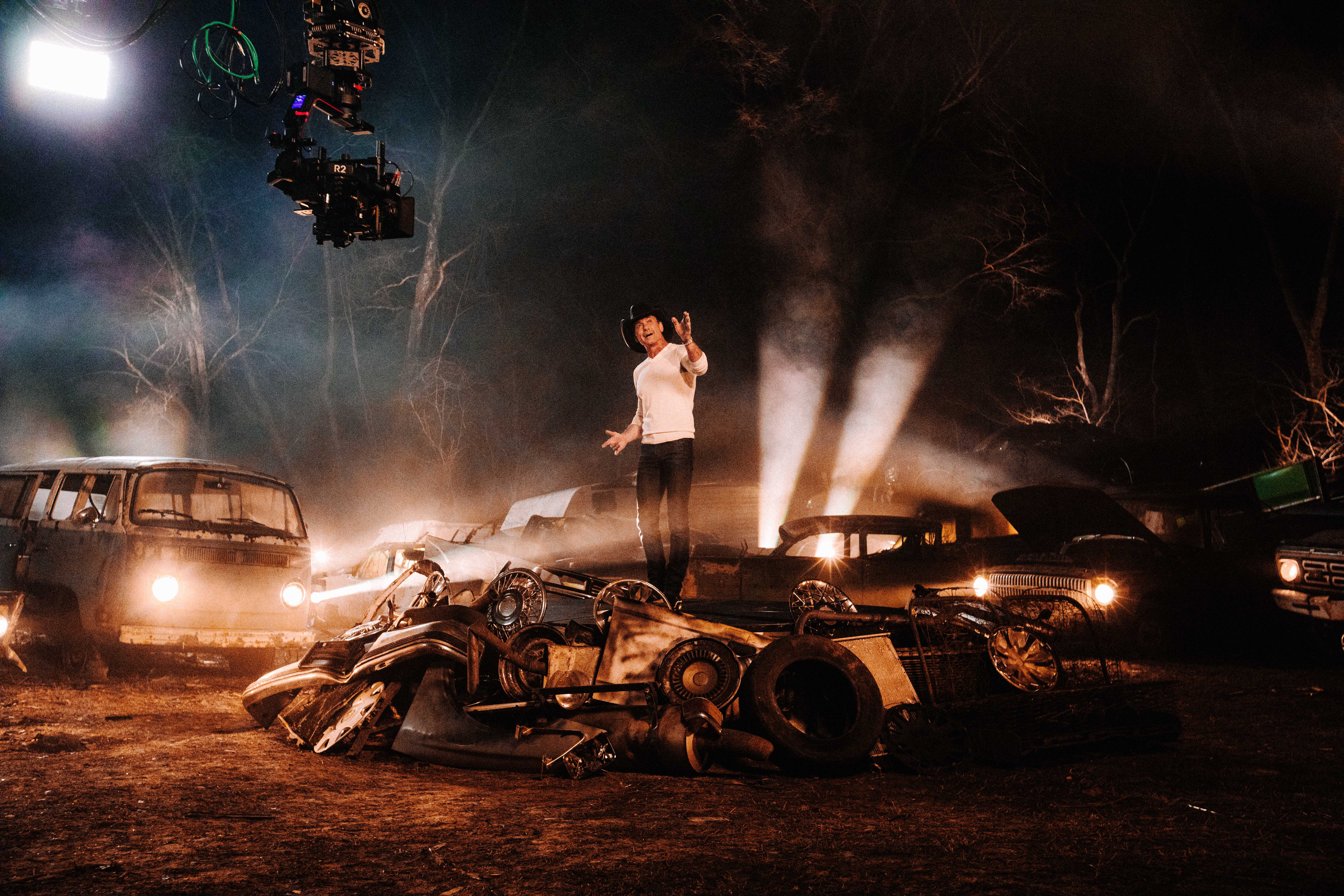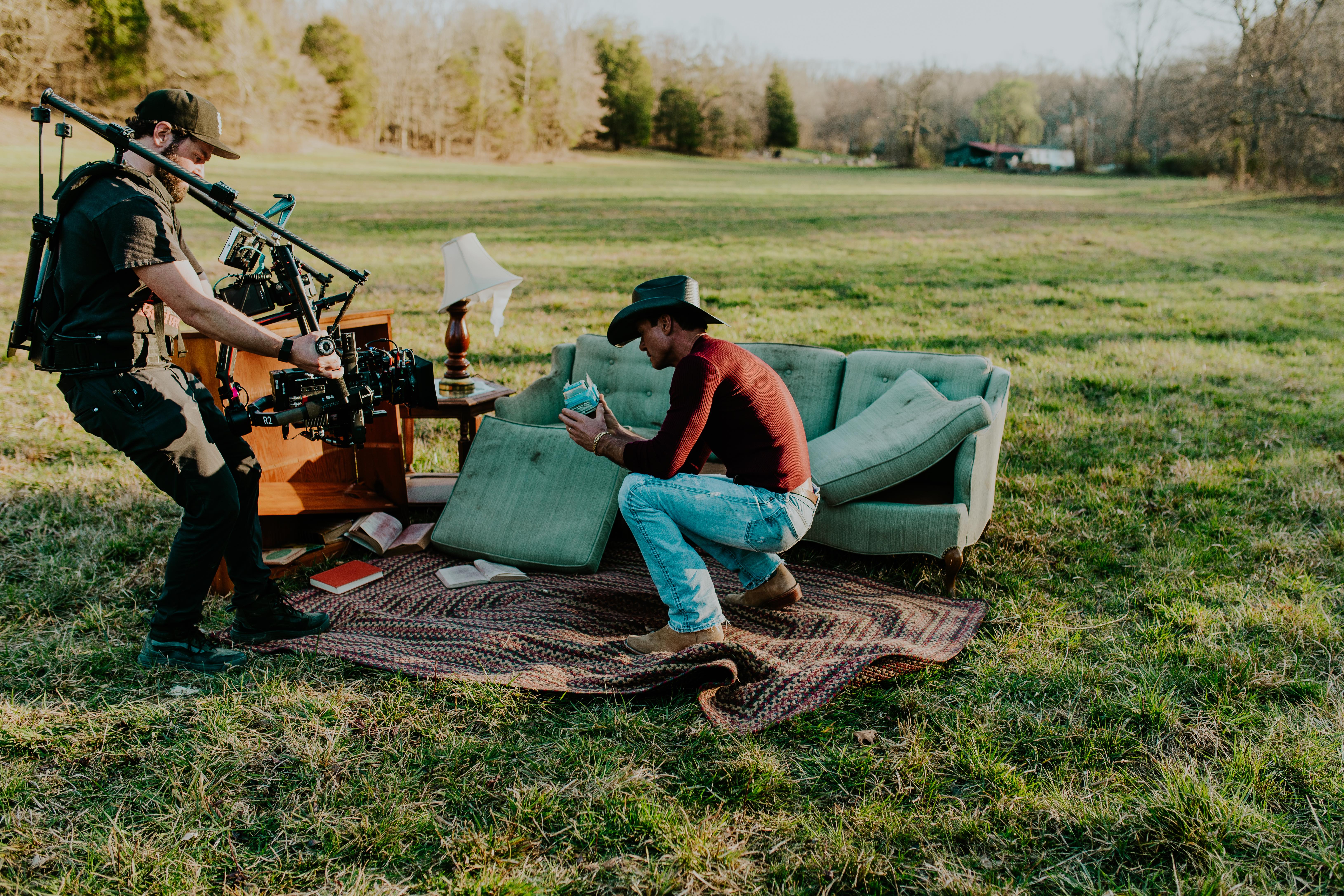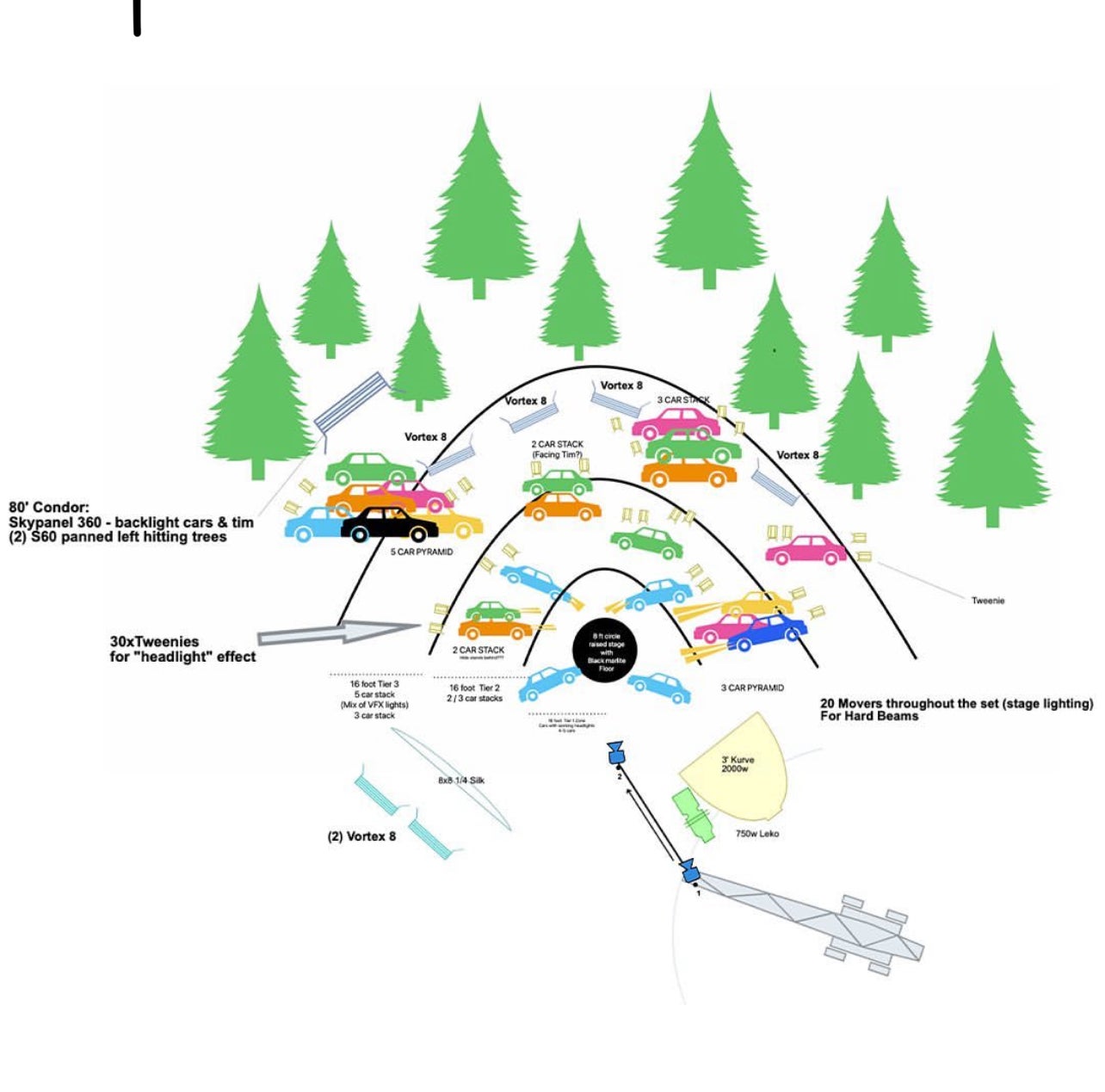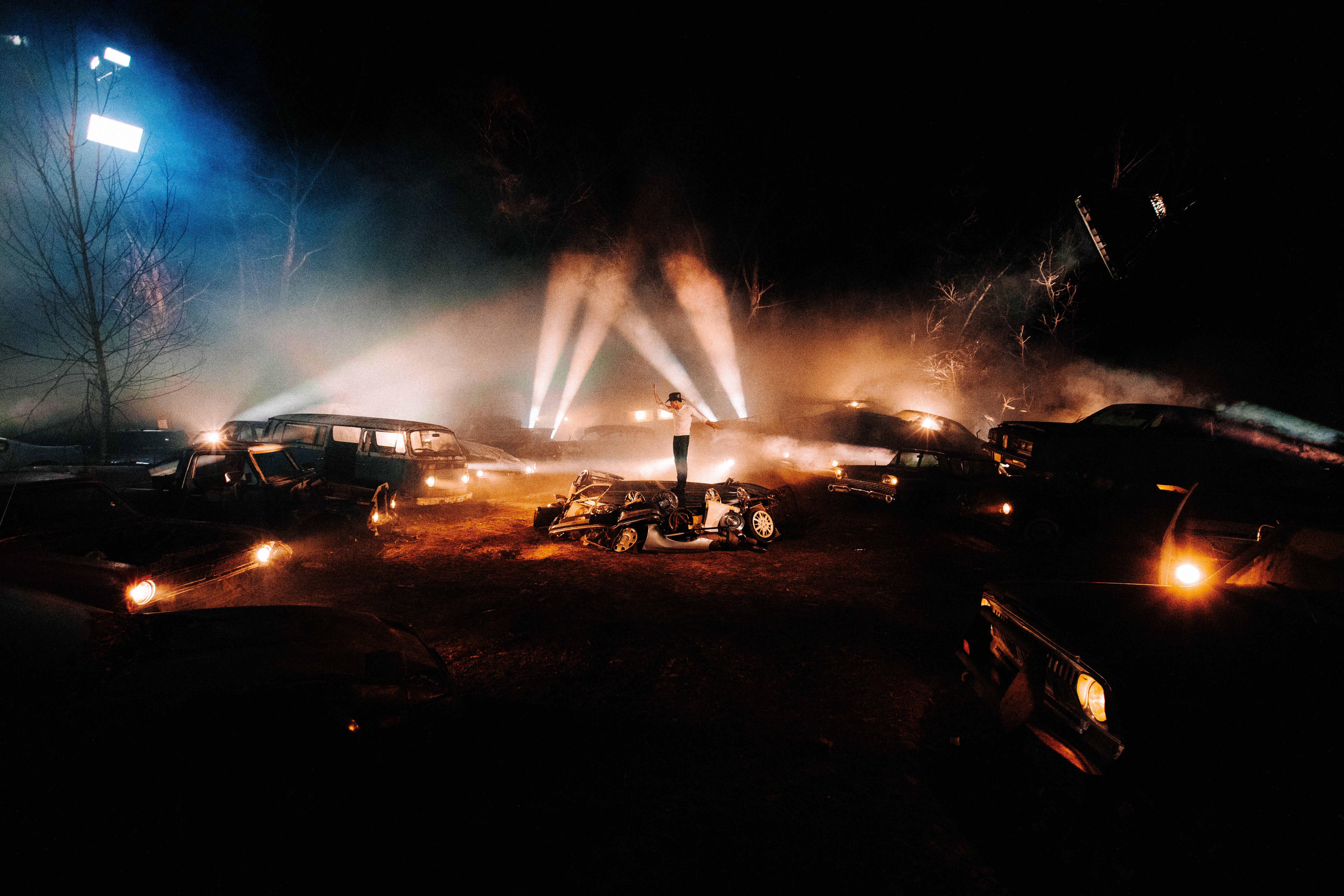
03-13-2024 - Case Study
What Does It Take to Make Great Music Videos? Take It from DP Justyn Moro, Who’s Used the Sony VENICE to Make Some of the Best in the Biz
By: Oakley Anderson-Moore
What do Grammy-winning Country singers and scruffy punk bands living in their van have in common? They all need a good music video.
And Justyn Moro knows how to shoot them. As a DP, he’s done cinematography for some of the most renowned musicians in the world.
“I was the music video guy for so long, it was like every month a new video would come out,” says Moro to Sony Cine.
How did he learn? For Moro, it all started as a teenager playing in his own band.
“My band probably did more photo shoots than we did recording actual songs,” jokes Moro.
As Moro realized his pull was more towards the visuals, he moved to LA and started shooting music videos for his friends’ bands until he could land his first paying gig.
“You had to learn from word-of-mouth,” says Moro. “Finding a mentor is so important because when I first moved to LA, I didn't have any experience. Finding someone that you look up to and you're able to ask questions of is a great way of learning.”
Now, Moro has started translating what he learned from becoming the music video guy into shooting TV and features. Sony Cine sat down with Moro to talk about anything from creating a rare Tim McGraw video with the Sony VENICE to what it takes overall to make a good-looking music video.
Making Music Videos Tip: Work with directors who have a vision, and bring them something more
You don’t need a good musician to make a good music video. Although Moro points out, it can help! What you need more than anything is a director who has a vision that you can add to.
“It starts with a good director who has a vision, and you are there to deliver that vision,” says Moro. “Something that I always try to do is bring a little bit more to the table. Offer exactly what they're looking for, and maybe a little bit more.”
That’s how it worked on one of Moro’s recent videos with Tim McGraw. When Moro first heard from filmmaker Andrew Sandler, he was based in Nashville, and was interested in the director’s concept.
“I've always been really interested in working with Andrew,” says Moro. “He thought my style and what I could bring to the table would really match this treatment. It was extremely ambitious. There were a lot of moving pieces. There were a lot of light gags...To be honest, it was a nightmare! But I thought it was really cool. Obviously working with someone like Tim McGraw is a huge opportunity.”
Evidently, Mcgraw doesn’t do a whole lot of music videos, and this all stood out to Moro. He ended up bringing more to the concept when it came to cinematography.

Making Music Videos Tip #2: Match the Sony VENICE with the right lenses
For Moro, the VENICE and VENICE 2 have been his cameras of choice for some time. When it comes time to pair the camera with the right lenses, it’s whatever the concept calls for.
“I love the way anamorphic looks, but it's not meant for every project,” explains Moro. “I think another benefit of the VENICE is the full frame and super 35 mode. Being able to universally use any lens is really beneficial.”
Each music video is different, so there’s no camera and lens combination that will work every time. For “Standing Room Only”, Moro knew he would be having a nostalgic feel that would cut with flashbacks that were shot on Super 16mm film.
“I really like the look of the camera,” says Moro. “We wanted a little bit more of a film look, so we paired up the camera with vintage lenses. We shot Super Baltars. And I've always thought that the VENICE gives you that look a little more than other cameras. I thought that this camera and lens combination would be the best look for what Andrew was going for.”

Making Music Videos Tip #3: Stay versatile with rigging, dual ISO, and internal NDs on fast-moving music video sets
On the set of a music video, you have a fraction of the time you might have on a feature. For “Standing Room Only”, Moro only had one day of shooting.
“We had one scout day, one day of shooting. We tried to keep our locations really contained. We shot in one big field and about 100 yards away, we shot this junkyard scene with all the cars. Our department spent an extra day stacking up cars and building a stage for Tim. We shot with the actors in the morning. Tim came in in the afternoon. After that, we went over and shot the main performance in the car junkyard for an hour and a half. That was our day.”
To move that quickly, Moro needed a camera that could keep up.
“The versatility of the camera body was also great. We went from handheld, to Ronin, to an arm on the back of a Gator, and we did that with ease. It was really, really, quick, simple, easy, and with the camera body plus our incredible team, we were able to pull it off quickly.”
It was also a boon to use the dual ISO and internal ND options on the VENICE.
“Having the dual ISO was a huge benefit to us because we had a lot of day stuff, and we had a lot of night stuff. The internal NDs in increments of three was always great. And I think for the background of the video, with the junkyard, the field, all these river scenes, all these different textures, I thought that that was the best camera for the job.”

Making Music Videos Tip #4: Go big or go home on the main performance
Of course, no matter how different a music video might look, one thing is always key: the performance of the song itself.
“Tim McGraw, who is such an icon and doesn't do a whole lot of videos, I think it's pretty important that he looks good,” says Moro.
“I love big setups for music videos. We initially talked about doing the car headlights coming on in post-production and as a DP, that's not really exciting to hear. You really want to do it practically. I think it looks better. The environment plays off of lights coming off and on. When I first read the treatment I knew it was something I'd never done that I really wanted to try."
Moro met with the gaffer and started brainstorming how to get real headlights, who came up with the idea of Par64s, 500-watt tungsten lights that could be wired inside the actual car headlight.
“It looked vintage, it aesthetically looked good. We ran wire to every single bulb to a DMX board. I think it was 30 total in addition to stage lighting that all pointed based on our angle on the techno crane. Rob Bennett was the gaffer and Billy Gomez the key grip, and they absolutely crushed it; they're definitely the best in Nashville.”
Making Music Videos Tip #5: How to work with high-profile musicians
Moro says that by now, the intimidation factor has gone away, but it’s OK to still get butterflies in your stomach as long as you’re prepared.
“Usually the director gets some time to chat with the artist before they're invited to set,” describes Moro. “Other times the talent gets to come and check out the set. Tim was very hands-on. He was extremely nice. He went around, shook everyone's hand and thanked everyone for being there. Sometimes the first time I see them is when they're stepping in front of the lens.”
If that’s the case, Moro will always have pre-lit with someone as a stand-in, with and without a cowboy hat on, to make sure he is ready for them beforehand.
Making Music Videos Tip #6: Apply what you learn on music videos to everything else
“Standing Room Only” was one of Moro’s last music videos before moving into shooting TV and Features full time. He credits his music video work as some of the best training ground out there.
“I think being able to shoot an entire video in 10 hours is absolutely crazy and I can't believe that there's so many people that do it. Learning how to light quickly, learning how the camera responds to light is extremely beneficial. And on music videos, you're able to swap out lenses and test out filters and get a little more creative. that carries over to the narrative world because when it does come time to do a show or a movie, you've had that experience.”




